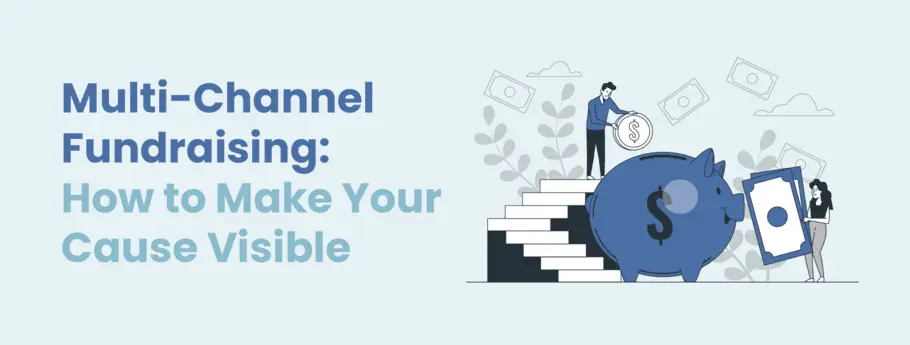Online Fundraising: Effective Digital Campaigns for Nonprofit Success
Online Fundraising: Effective Digital Campaigns for Nonprofit Success
Blog Article
The Role of Community Interaction in Nonprofit Fundraising: Structure Lasting Relationships for Sustainable Assistance
Area interaction is increasingly identified as an essential element of effective not-for-profit fundraising. By promoting genuine partnerships with local stakeholders, organizations can grow trust fund and loyalty, which are essential for sustainable assistance. Nevertheless, the methods and methods utilized to involve areas differ widely, increasing important questions concerning performance and impact. What are the best practices for cultivating these important links, and exactly how can nonprofits gauge their success in this arena? Recognizing these characteristics could dramatically influence the future of fundraising efforts and the overall goal of not-for-profit organizations.
Comprehending Area Engagement
Area involvement is an important element of effective nonprofit fundraising efforts. It refers to the methods and tasks that organizations employ to attach with their neighborhood communities, cultivating relationships that are mutually helpful. Recognizing community interaction includes acknowledging its multifaceted nature, which includes outreach, engagement, and cooperation. Nonprofits need to determine crucial stakeholders-- such as neighborhood members, local companies, and various other organizations-- to create reliable interaction approaches.
Efficient community involvement is based on energetic listening and responsiveness to the needs and passions of the neighborhood. This process involves obtaining comments, recognizing area characteristics, and making sure that the organization's goal aligns with local top priorities. Engaging the area can take various kinds, consisting of public meetings, volunteer chances, and collaboration initiatives, each made to motivate participation and investment in the company's objectives.
In addition, community interaction should be come close to as an ongoing discussion instead of an one-time initiative. By promoting a comprehensive environment where neighborhood voices are listened to and valued, nonprofits can develop a strong foundation for future fundraising undertakings. Ultimately, a deep understanding of neighborhood engagement equips companies to create authentic links that enhance their general performance and sustainability.
Advantages of Strong Relationships
Strong partnerships created through area engagement yield various advantages for nonprofit fundraising efforts. Primarily, these partnerships foster trust and reliability, crucial components in encouraging donors to add. When prospective supporters see a not-for-profit proactively associated with their neighborhood, they are most likely to count on its objective and effect.

Moreover, these partnerships help with efficient communication. Nonprofits can utilize their connections to share tales of effect, updates, and requires, making sure that supporters continue to be informed and involved. This open line of communication not only reinforces bonds however additionally encourages referral promotion, broadening the not-for-profit's reach.
Finally, strong area ties can draw in brand-new companions and enrollers. Businesses and people are more likely to straighten with organizations that demonstrate significant neighborhood participation, providing extra sources and assistance that can substantially enhance fundraising abilities. Hence, cultivating durable partnerships via community use this link interaction is indispensable to a not-for-profit's long-term fundraising success.
Techniques for Efficient Involvement
Exactly how can nonprofits properly involve their neighborhoods to improve fundraising initiatives? Regular updates, involving web content, and calls-to-action can galvanize neighborhood rate of interest and involvement.
Second, hosting area events, such as workshops, volunteer opportunities, or fundraising drives, helps with face-to-face communication, enabling nonprofits to display their effect and initiatives. These events not just elevate funds but also click now grow relationships and allow community participants to engage straight with the cause.
Third, applying personalized interaction techniques can enhance involvement. Customizing messages to details contributor segments based upon interests and past contributions promotes a sense of belonging and financial investment in the organization's objective.
Lastly, developing partnerships with regional organizations and area leaders can enhance outreach initiatives. Collaborative efforts can boost exposure and trustworthiness, demonstrating a collective dedication to the area's wellness. By incorporating these techniques, nonprofits can construct long lasting relationships that boost fundraising efforts and drive sustainable assistance.
Gauging Engagement Success
While involving the area is essential for effective nonprofit fundraising, determining the effectiveness of these engagement initiatives is just as important. Developing clear metrics permits companies to evaluate exactly how well they are getting in touch with their basics target market and achieving their fundraising goals. Secret efficiency signs (KPIs) such as benefactor retention prices, volunteer participation levels, and involvement on social networks systems give tangible data for evaluation.

Consistently assessing these metrics allows organizations to pivot their approaches when needed, making certain that area interaction remains lined up with their overall goal. In addition, sharing these results with stakeholders fosters openness and develops count on, urging additional area involvement. Inevitably, a robust measurement framework not just informs future fundraising efforts yet likewise reinforces the connection between the nonprofit and its fans, preparing for lasting success.
Case Research Studies in Community Influence
Numerous situation researches show the extensive impact that neighborhood involvement can have on not-for-profit fundraising success. One remarkable example is the "Something to chew on" initiative, where a regional food financial institution partnered with colleges and companies to host community dinners. These events not just raised funds but likewise cultivated a feeling of belonging among participants, significantly enhancing contributor retention prices.
An additional compelling case is the "Eco-friendly Spaces Job," which entailed neighborhood residents in the revitalization of urban parks. This effort not only gathered financial backing from neighborhood businesses but also grew a volunteer base that contributed to continuous maintenance and programs. The sense of possession and pride among community participants equated into sustained contributions.
In the realm of arts, the "Art for All" campaign efficiently involved neighborhood musicians and clients to develop collective art installments, leading to increased exposure and donations for a neighborhood arts not-for-profit.
These examples highlight that when nonprofits prioritize community participation, they can develop lasting relationships that boost fundraising initiatives, making certain sustainable assistance and promoting a dynamic community culture. Such instances show that neighborhood interaction is not merely a strategy but an essential column of not-for-profit success.
Verdict
In conclusion, neighborhood engagement is important to the success of nonprofit fundraising efforts. Inevitably, a durable structure of area support not just amplifies fundraising prospective but likewise grows a culture of partnership, vital for attaining long-term business objectives and maintaining meaningful influence. fundraising consultant.
Nonprofits need to determine key stakeholders-- such as neighborhood participants, regional services, and various other organizations-- to create efficient involvement techniques.

In final thought, community involvement is essential to the success of nonprofit fundraising initiatives.
Report this page